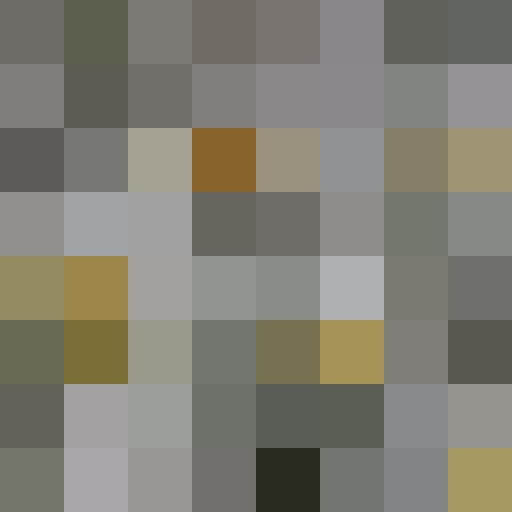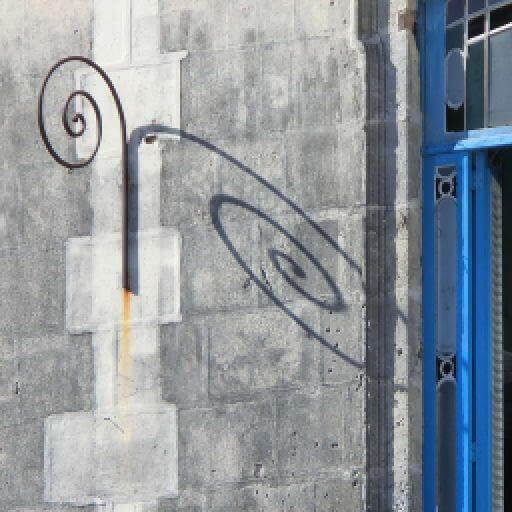Vision Spatial Resolution
Although our eyes’ photoreceptors are very tiny, their size, spacing from each other, and how our eyes focus light limit us from seeing very tiny objects, such as the individual cells in our skin or objects far away from us. Sitting at a reading distance from your computer screen, can you see the screen’s individual areas of color, which are called pixels?
Even though our eyes detect many small areas of color, our brain fills in the dots to create lines and edges, helping us identify or perceive individual objects. In the late 1800s, a style of painting evolved in which artists painted tiny colored dots (pointillism) rather than using long brush strokes to create their images. The combination of our photoreceptors in our two eyes and our complex image processing within our brain create human vision.
Explore Your Vision’s Spatial Resolution
Explore how your vision detects objects in images with varying degrees of spatial resolution (the size and number of pixels that make up the image) with the following web app, Pixel Resolution. You may explore how images appear differently when viewed with greater or fewer pixels or play games of varying degrees of challenge to identify the number and shapes of objects being displayed. Each game is five rounds, and you may identify the number and shape of the objects separately when you feel you have the needed visual information. When the game is completed, you may compare your score to others who have played.
Interestingly, your scores will go up as your experience increases. This is because we become better observers with practice.
Click on the button to run the web app designed for tablet screens and larger.

Can you identify what objects are in this low-resolution image? There are only 64 pixels providing detail. As the pixels get smaller, more detail appears but you aren’t zooming in. Rather you have a greater number of smaller color “tiles” being used.
Acknowledgments
I want to thank Lincoln Berkley, Mason Glidden, Mattea Horne, and Cydnie Reiman for their many suggestions during beta testing. Special thanks to Eric Klopfer and Daniel Wendel for sharing their knowledge about learning games. At the least, their infectious passion has rubbed off for developing these types of experiences.

Your Eyes’ Spatial Resolution
Use the web app to test your eye’s spatial resolution. Look at the pictures to the left and right. One has 4 times as many pixels than the other (so a greater pixel or spatial resolution). Can you see a difference? Do both eyes see the same detail? Cover one at a time and view the images. What happens if you move further away from the screen? If you wear glasses or contacts, try viewing the images without them.
Use the web app to see if/when you stop seeing more details as the spatial resolution increases.

Resolution and Astronomy
Although the German-Dutch lens maker, Hans Lippershey, invented the telescope in 1608, Galileo was the first person to view the “heavens” with it. He didn’t just study the night sky, he also mapped sunspots which showed that the Sun rotated. But the magnification of his telescope was not impressive by today’s standards; it was only 3x. But he made some amazing discoveries with such a relatively low powered telescope, such as the discovery of the four massive moons of Jupiter. Today’s discoveries of our universe are in part due to the increased resolution of telescopes. The groundbreaking Hubble space telescope could measure the width of a human hair at 1 mile from the antenna! And this was launched in 1990! As technology has advanced, so has the resolution of telescopes, and astronomical discoveries are occurring at a near-frenetic pace! The greater the detail we can see, the more we can deduce about the processes taking place light-years away from Earth.
Resolution and Viewing Earth
As soon as humans could take a camera off the ground, they began taking pictures of Earth from above. First, it was hot air balloons, followed by kites, pigeons, rockets, airplanes, and now, drones. Although the first image of Earth from space was made in 1946, the first satellite image of Earth to be radioed back to humans was taken by NASA in 1960. Since then, Earth-viewing satellites have been put into orbit to monitor our atmosphere, oceans, ice cover, plant cover, land surfaces, and even groundwater levels. And with the improving technologies, image resolution has steadily improved allowing us to observe and measure smaller and smaller-scale phenomena.

This image of gas and dust in space was taken by the Hubble Space Telescope on its 20th year viewing the universe. Soon the James Webb space telescope will add the latest technologies to view what’s in space.
Topics in Observing
- Our Senses and Brain
- Perspective,
- Technology,
- Measurement,
- Data, Graphs, and Functions
- Function Transformations
- Contouring, and
- Improving Observational Skills.
Measure your:

0 Comments